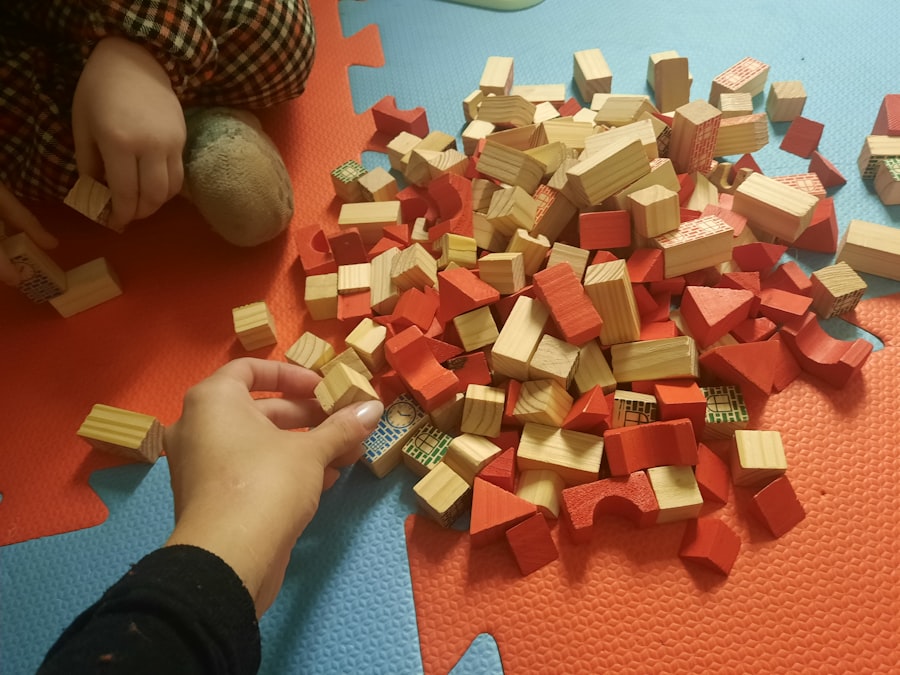Child development is a multifaceted process that encompasses physical, cognitive, emotional, and social growth from infancy through adolescence. Each stage of development is characterized by specific milestones that children typically reach, although the timing can vary significantly from one child to another. For instance, during the early years, children experience rapid brain development, which lays the foundation for their future learning and behavior.
This period is crucial as it is when they begin to form attachments, develop language skills, and start to understand the world around them. Theories from developmental psychologists, such as Jean Piaget and Erik Erikson, provide frameworks for understanding how children think and feel at different ages, emphasizing the importance of nurturing environments that support their growth. As children progress through various stages, they encounter new challenges that require them to adapt and learn.
For example, toddlers begin to assert their independence, often leading to power struggles with caregivers. This phase is marked by a desire for autonomy, which can manifest in behaviors such as saying “no” or engaging in tantrums. Understanding these developmental phases allows parents and educators to respond appropriately, fostering an environment where children feel safe to explore and express themselves.
Recognizing that each child develops at their own pace is essential; some may excel in verbal skills while others may show advanced motor skills. This diversity in development underscores the need for tailored approaches that cater to individual strengths and weaknesses.
Effective Communication with Children
Effective communication with children is a cornerstone of healthy relationships and plays a vital role in their development. It involves not only the words we choose but also our tone, body language, and the context in which we communicate. Engaging children in conversations that are age-appropriate fosters their language skills and encourages them to express their thoughts and feelings.
For instance, when speaking with toddlers, using simple language and clear instructions can help them understand better. Phrasing questions in a way that invites them to share their opinions—such as asking, “What do you think about this?”—can empower them and build their confidence in communication. Active listening is another critical component of effective communication.
This means giving children your full attention when they speak, validating their feelings, and responding thoughtfully. When a child shares a concern or excitement about something, acknowledging their emotions can strengthen the bond between caregiver and child. For example, if a child expresses fear about starting school, responding with empathy—”It’s okay to feel nervous; many kids feel that way”—can help them feel understood and supported.
Additionally, using storytelling as a communication tool can be particularly effective; it not only captures children’s attention but also helps them relate to complex emotions and situations through characters and narratives.
Setting Boundaries and Consistency
Setting boundaries is essential for children’s development as it provides them with a sense of security and helps them understand acceptable behavior. Boundaries act as guidelines that inform children about what is expected of them and what consequences may arise from their actions. For instance, establishing rules around screen time or bedtime creates a structured environment where children can thrive.
Consistency in enforcing these boundaries is equally important; when rules are applied uniformly, children learn to trust that their caregivers will uphold expectations. This consistency helps reduce anxiety and confusion, allowing children to navigate their world with greater confidence. Moreover, boundaries should be communicated clearly and positively.
Instead of simply stating what not to do, caregivers can frame rules in a constructive manner. For example, instead of saying “Don’t run inside,” one might say “We walk inside to keep everyone safe.” This approach not only clarifies expectations but also reinforces positive behavior. Additionally, involving children in discussions about boundaries can foster a sense of ownership and responsibility.
When children understand the reasons behind certain rules—such as why sharing toys is important—they are more likely to adhere to them willingly.
Positive Discipline Techniques
Positive discipline techniques focus on teaching rather than punishing, aiming to guide children toward understanding the consequences of their actions while fostering self-discipline. One effective method is the use of natural consequences, where children learn from the outcomes of their behavior in a safe environment. For instance, if a child refuses to wear a coat on a chilly day, they may feel cold outside; this experience teaches them the importance of dressing appropriately without the need for punitive measures.
Such approaches encourage critical thinking and help children make better choices in the future. Another positive discipline technique involves redirecting behavior rather than simply reprimanding it. For example, if a child is throwing toys instead of playing with them appropriately, caregivers can redirect their energy by suggesting an alternative activity or providing a different toy that is more suitable for throwing, such as a soft ball.
This method not only addresses the immediate behavior but also encourages creativity and problem-solving skills. Additionally, praising positive behavior reinforces good choices; acknowledging when a child shares or helps others can motivate them to continue those behaviors.
Building Resilience in Children
Resilience is the ability to bounce back from challenges and setbacks, an essential skill for navigating life’s ups and downs. Building resilience in children involves equipping them with coping strategies and fostering a growth mindset—the belief that abilities can be developed through dedication and hard work. One effective way to cultivate resilience is by encouraging children to face challenges rather than shielding them from difficulties.
For instance, allowing a child to struggle with a puzzle before stepping in to help teaches them perseverance and problem-solving skills. Moreover, modeling resilience as caregivers is crucial; children learn by observing how adults handle stress and adversity. Sharing personal stories of overcoming obstacles can provide valuable lessons about resilience.
For example, discussing how one coped with failure or disappointment can help children understand that setbacks are a natural part of life and can be overcome with effort and determination. Additionally, fostering strong relationships with peers can enhance resilience; encouraging teamwork and collaboration helps children develop social skills that are vital for navigating challenges together.
Nurturing Emotional Intelligence
Emotional intelligence (EI) refers to the ability to recognize, understand, and manage one’s own emotions while also empathizing with others’ feelings. Nurturing EI in children is essential for their social development and overall well-being. One effective strategy is teaching children to identify their emotions through language; using tools like emotion charts can help them articulate how they feel in various situations.
For instance, when a child experiences frustration during a challenging task, guiding them to express that feeling rather than acting out can lead to healthier emotional regulation. Additionally, fostering empathy is a key component of emotional intelligence. Encouraging children to consider others’ perspectives helps them develop compassion and understanding.
Role-playing scenarios where they must navigate social situations—such as sharing or resolving conflicts—can provide practical experience in managing emotions effectively. Furthermore, discussing characters’ feelings in books or movies can serve as a springboard for conversations about empathy and emotional responses. By nurturing these skills early on, caregivers equip children with tools that will serve them throughout their lives.
Encouraging Independence and Responsibility
Encouraging independence in children is vital for their development into self-sufficient individuals capable of making decisions and taking responsibility for their actions. One way to foster independence is by providing age-appropriate tasks that allow children to practice decision-making skills. For example, allowing a child to choose their outfit for the day or decide on snacks empowers them to make choices while also learning about consequences—such as feeling uncomfortable in mismatched clothing or realizing they prefer healthier snacks.
Responsibility can also be cultivated through household chores tailored to a child’s abilities. Assigning simple tasks like setting the table or sorting laundry not only teaches practical skills but also instills a sense of accomplishment and belonging within the family unit. As children successfully complete these tasks, they gain confidence in their abilities and learn the importance of contributing to their environment.
Moreover, discussing the impact of their choices—such as how helping out at home benefits everyone—reinforces the value of responsibility.
Strengthening Family Relationships
Strong family relationships are foundational for children’s emotional health and development. Open lines of communication within the family create an environment where members feel valued and understood. Regular family meetings or check-ins can provide opportunities for everyone to share their thoughts and feelings openly.
These gatherings foster connection and ensure that each family member’s voice is heard, promoting mutual respect and understanding. Quality time spent together also plays a significant role in strengthening family bonds. Engaging in shared activities—whether it’s cooking dinner together, playing games, or going on outings—creates lasting memories and reinforces familial ties.
These experiences not only enhance relationships but also provide opportunities for teaching important life skills such as teamwork and cooperation. Furthermore, celebrating achievements together—no matter how small—can instill a sense of pride within the family unit while reinforcing positive dynamics that contribute to children’s overall well-being. In summary, understanding child development encompasses various aspects that influence how caregivers interact with children effectively.
By employing strategies such as effective communication, setting boundaries, positive discipline techniques, building resilience, nurturing emotional intelligence, encouraging independence, and strengthening family relationships, caregivers can create an environment conducive to healthy growth and development for children at every stage of life.








